15 Common Household Items You Didn’t Know Were E-Waste
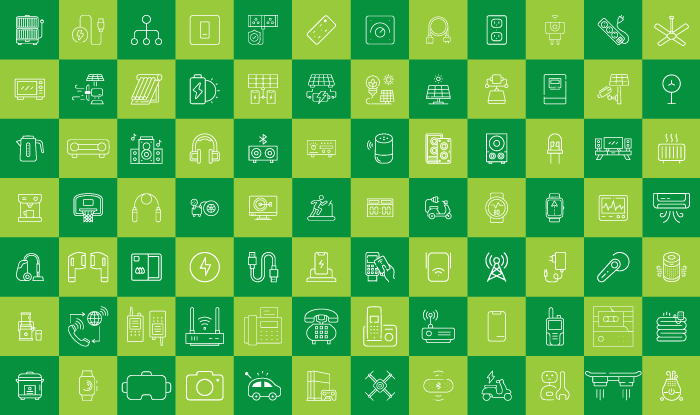
E-waste is a combined term for all types of disposed items and waste that contain electrical components or devices. It includes a wide range of equipment, devices, appliances, gadgets, and other electrically powered items, most of which are present in our own homes.
E-waste, for short, or Electronic Waste, is not all waste. It contains valuable components and items, along with hazardous and poisonous materials. Therefore, proper disposal and recycling are essential. Also, improper handling of e-waste can cause dangerous and even life-threatening results since it contains many toxic and harmful materials. So, it is best to contact a professional residential e-waste disposal and recycling squad. They mainly offer free pickup and even pay for old tech.
Now, what devices and household items come into this category?
Here is a list to be aware and avoid throwing these items in the trash.
1. Large Appliances
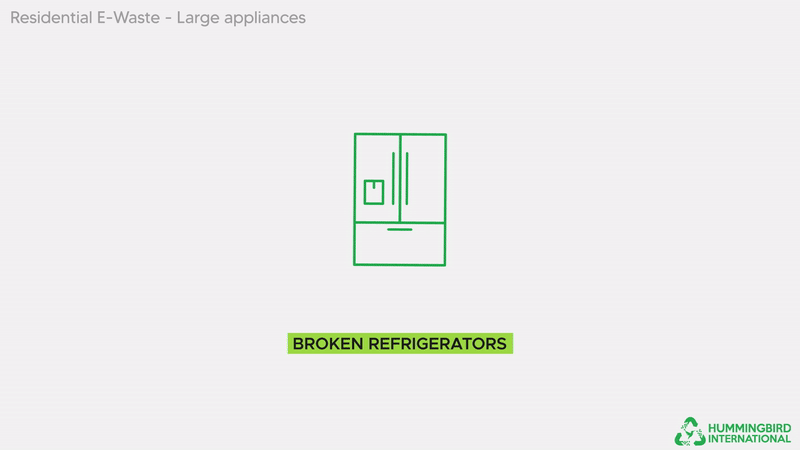
Non-functional large appliances that have reached the end of their life cycle.
Large household appliances include fridges, freezers, washing machines, dryers, dishwashers, and other products. They also include pool pumps, power tools, lawn mowers, and other garden equipment, which are often stored in garden sheds for backyard storage. These items contain valuable and toxic materials that should not end up in garbage or landfills, including motors, silicone, metal, circuit boards, etc.
2. Small Appliances
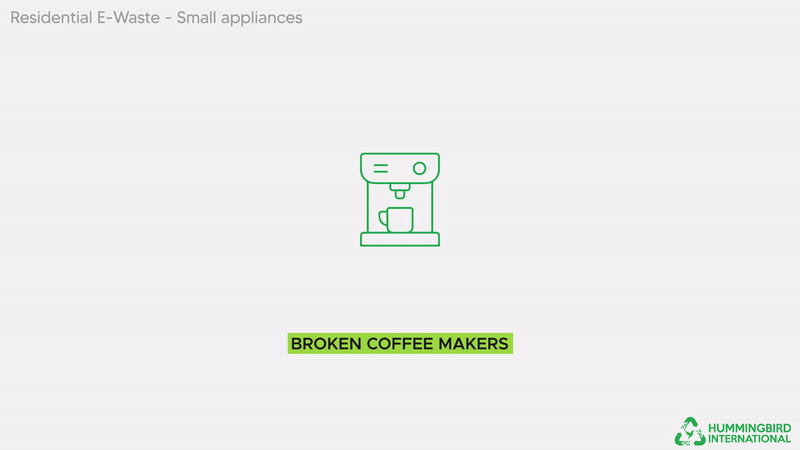
Faulty or broken small household appliances that are no longer usable.
Small household appliances include microwave ovens, toasters, irons, hairdryers, shavers, coffee makers, tea makers, and other kitchen or household tools. These also contain helpful and harmful materials, so handing them over to certified technicians and disposal service providers is essential.
3. Telecommunication Equipment

Non-working communication devices that are no longer serviceable.
Telecommunication or information technology equipment includes personal computers, telephones, mobile phones, laptops, scanners, photocopier machines, and other IT equipment. The most important items to discard properly are these.
4. Telecommunication Accessories
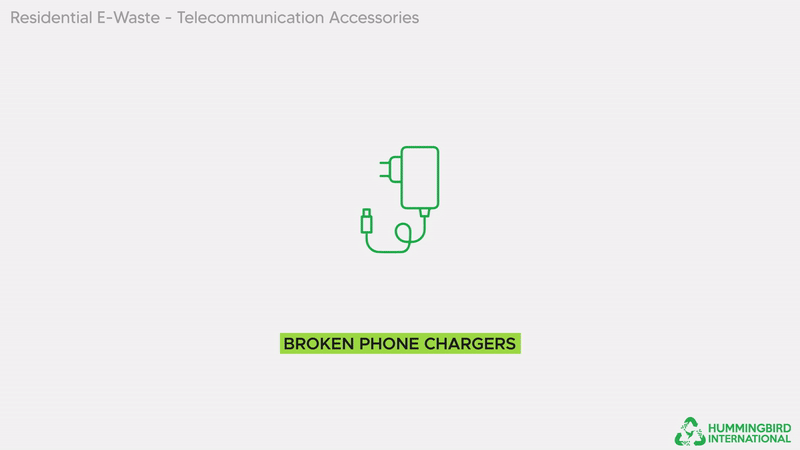
Broken or outdated accessories for phones and communication devices.
Telecommunication accessories include mouse, keyboards, printers, external hard drives, routers, projectors, and other IT gadgets or tools that connect with IT equipment. These items can include hidden treasures and helpful materials like copper, metal, lithium, etc.
5. Sound Systems
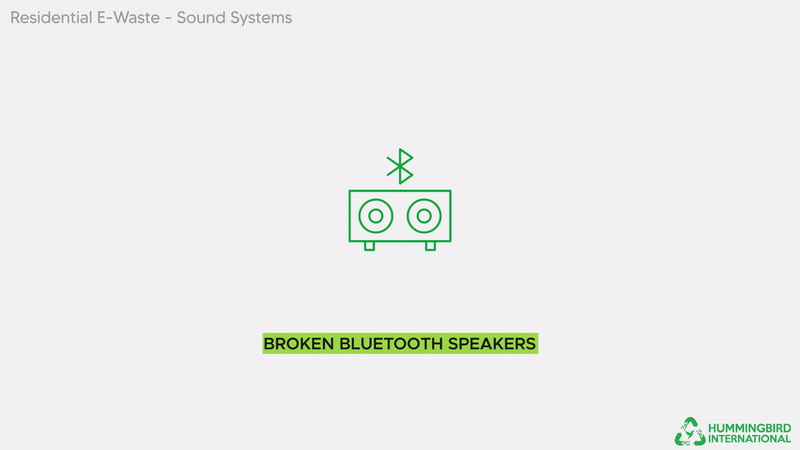
Defunct audio systems and components that are no longer operational.
Sound systems include speakers, amplifiers, woofers, subwoofers, mixing desks, microphones, keyboards, etc. These things convert electric signals and technology to produce sound. They contain magnets, batteries, coils, wires, and many more hazardous items that must undergo a proper recycling preparation phase.
6. Medical Equipment
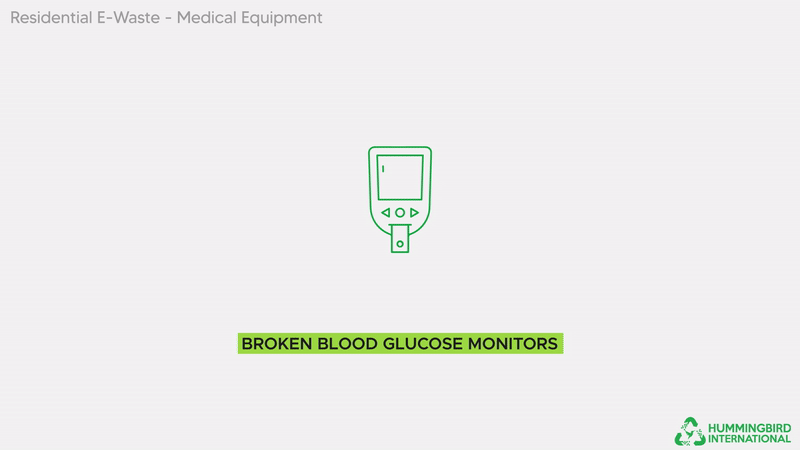
Outdated or broken electronic medical devices no longer suitable for use.
Medical facilities have modern electronic equipment, such as X-ray machines, ventilators, heart rate monitors, incubators, and many other devices. These devices contain many recyclable resources, such as gold, rate elements, and silver. Additionally, they contain harmful materials, such as batteries, magnets, glass, etc.
7. Lighting Accessories
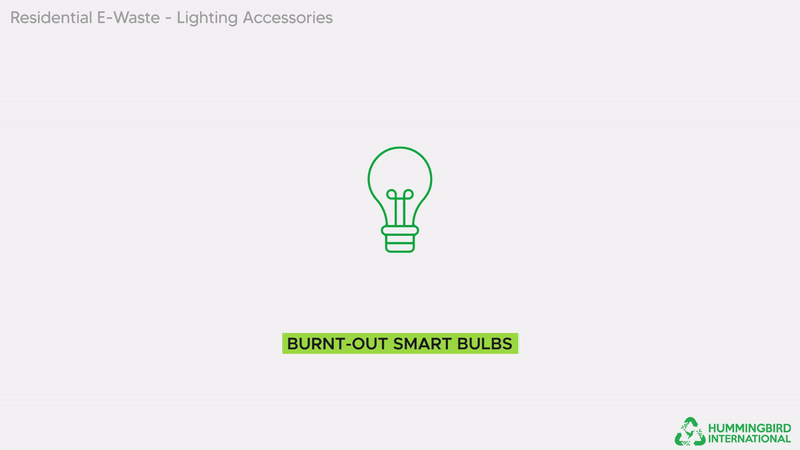
Damaged or outdated lighting accessories with electronic parts no longer function.
Lights and other accessories are more complicated these days. Today, we have regular and intelligent lights that contain even more e-waste. However, both have hazardous elements that can be extremely harmful when thrown with other garbage. All types of lighting waste must go into the proper recycling and disposal process.
8. Electrical Accessories
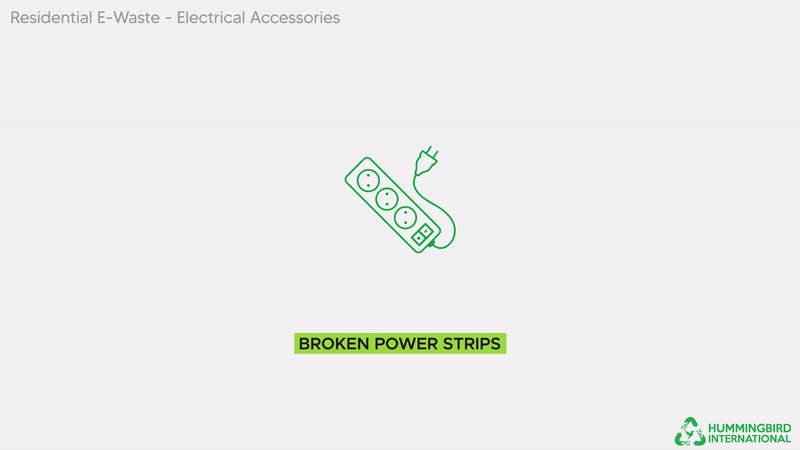
Damaged, outdated, or non-functional electrical add-ons no longer work properly.
Electrical accessories include equipment used to generate, transfer, and measure electricity. In short, they are all the extras that make up an electric system, like batteries, wiring, outdoor extension cord, and switches. These materials are not good for the planet if thrown recklessly; therefore, it is essential to recycle dead batteries, broken cords, and old electric hoardings.
9. Electrical Tools
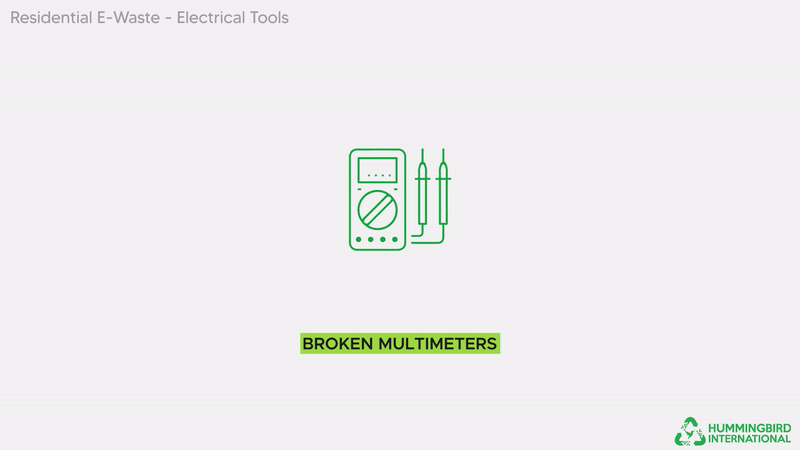
Broken or faulty tools with electrical components that have ceased functioning.
Electric tools, such as handheld drills, saws, screwdrivers, nail guns, woodcutters, and other similar tools, contain harmful and toxic materials that should never be discarded in landfills without processing.
10. Heating and Cooling Systems

Non-working devices used for regulating temperature that are considered residential E-waste.
Air conditioners, heaters, fans, and coolers are all e-waste. They contain chemicals, coolants, wiring, electric components, and other things that should not be thrown into landfills. So, if you are about to throw out or replace your old heating or cooling systems, go for eco-friendly disposal and recycling.
11. Solar Power Systems
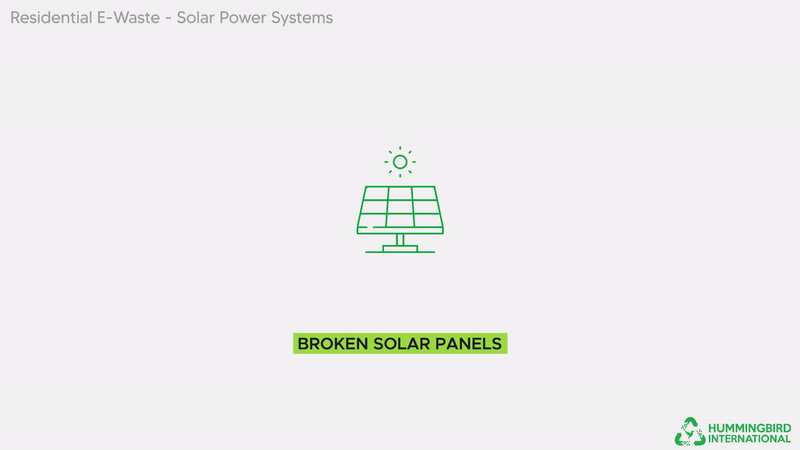
Defective solar-powered devices or components that are no longer operational.
Solar panels, batteries, inverters, and connecting equipment contain valuable and harmful materials. Solar panel recycling is extremely important, as improper recycling, replacement, and disposal can become a major source of electronic waste. Materials such as controllers, cables, batteries, wiring, and meters contain e-waste. You can recycle and sell items to make money and recycle materials.
12. Toys and Gadgets
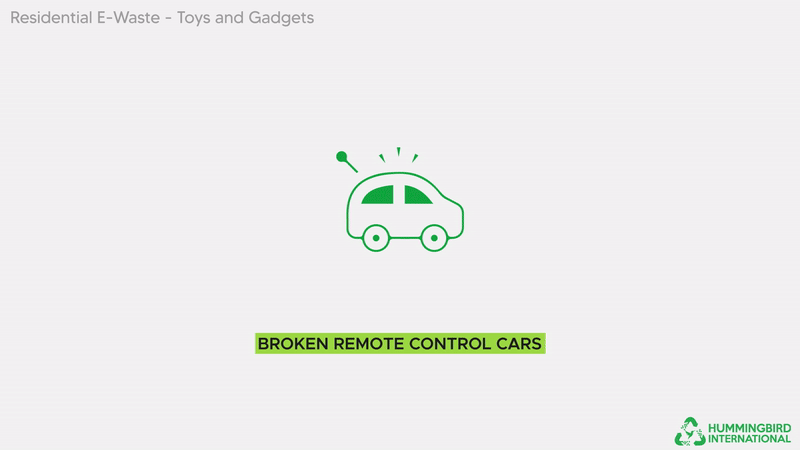
Outdated or broken electronic toys and gadgets that have reached the end of their life.
Today’s toys and gadgets for kids come in many varieties filled with features. They light up, make noises, have batteries, speakers, remote control systems, and whatnot. This means they also contain circuit boards, motors, wiring, and plastic shells, among other materials. We should treat them as e-waste and dispose of them properly.
13. Sports Equipment
Broken digital heart rate monitors
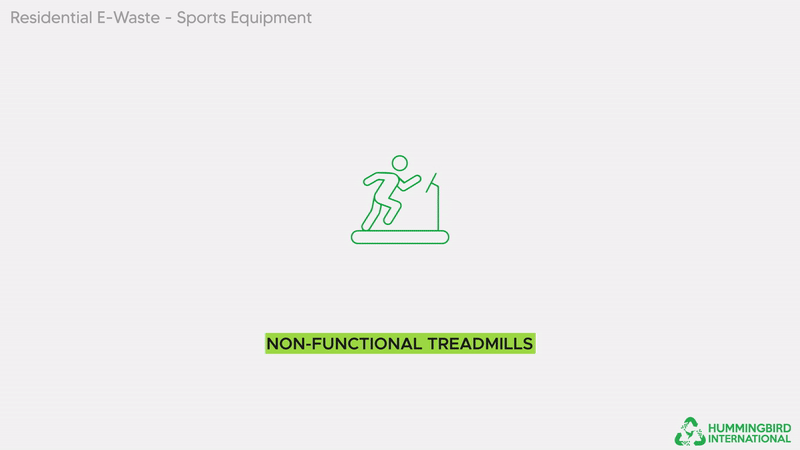
Sports-related devices with integrated electronics that no longer work.
Sports equipment and accessories include electric bikes, fitness watches, digital cameras, scooters, speedometers, meters, and other gadgets used in sports. All these things have electric motors, circuit boards, wires, and other components that require proper disposal.
14. Monitoring Instruments
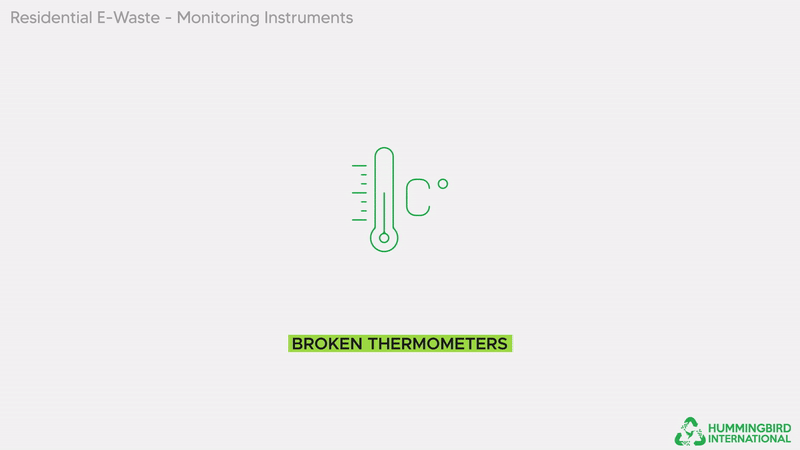
Faulty or broken home monitoring devices with electronic components.
Monitoring instruments include cameras, drones, CCTV equipment, smart home devices, baby monitors, home pods, and other tools used for monitoring and control. These household items contain both valuable and toxic materials.
15. Personal Care Equipment

Non-functional electronic personal care items that are no longer usable.
Personal care equipment like electric razors, shavers, massagers, massage guns, pedicure machines, foot bathers, etc all contain e-waste materials and should be treated as such. Mostly, people throw away or try to take apart these devices themselves, both of which are extremely dangerous.
What Must We All Do About The Growing E-Waste Problem?
E-waste is present in the everyday equipment and tools we have in our household. The World Counts study shows that e-waste is present in:
The whole world is responsible for e-waste generation, and it is the duty of all of us to take proper measures to reduce and hopefully eliminate it. For that, recycling is the best option. You can reduce home e-waste by following simple e-waste recycling tips, such as donating old devices, properly disposing of electronics at certified centers, or repurposing gadgets creatively.
Since Residential e-waste is different from commercial e-waste, you must choose a certified and professional residential e-waste management company. They will also ensure all your personal data and sensitive information is destroyed. The company will carry out safe disposal procedures to help minimize the harmful impacts of e-waste and recycle useful components.
Final Takeaway
E-waste is a growing problem, and we all must take the responsibility of eliminating the problem from our society. We should all think about and adopt eco-conscious living standards to save our planet and minimize the harm caused by e-waste.
Also, some of the materials present in e-waste, like copper, gold, and silver, are highly important. On the other hand, materials like lead, mercury, and cobalt can cause toxicity. So, if they end up in landfills or oceans, they can poison human life, marine life, and wildlife.
Therefore, you should choose a reliable e-waste disposal and recycling company for sustainable e-waste management. They will separate the valuable components and process the others for safe disposal.
About The Author Kelly Sampson
Kelly Sampson is a writer, blogger, and environmental enthusiast. She has strong opinions about climate change, the dogs vs. cats debate, and Oxford commas. She has lent Hummingbird International her engaging and spirited voice and turned our blog into a great place to find valuable information about e-waste, e-waste recycling, and the ITAD industry. Explore our blog to read more of her work.






